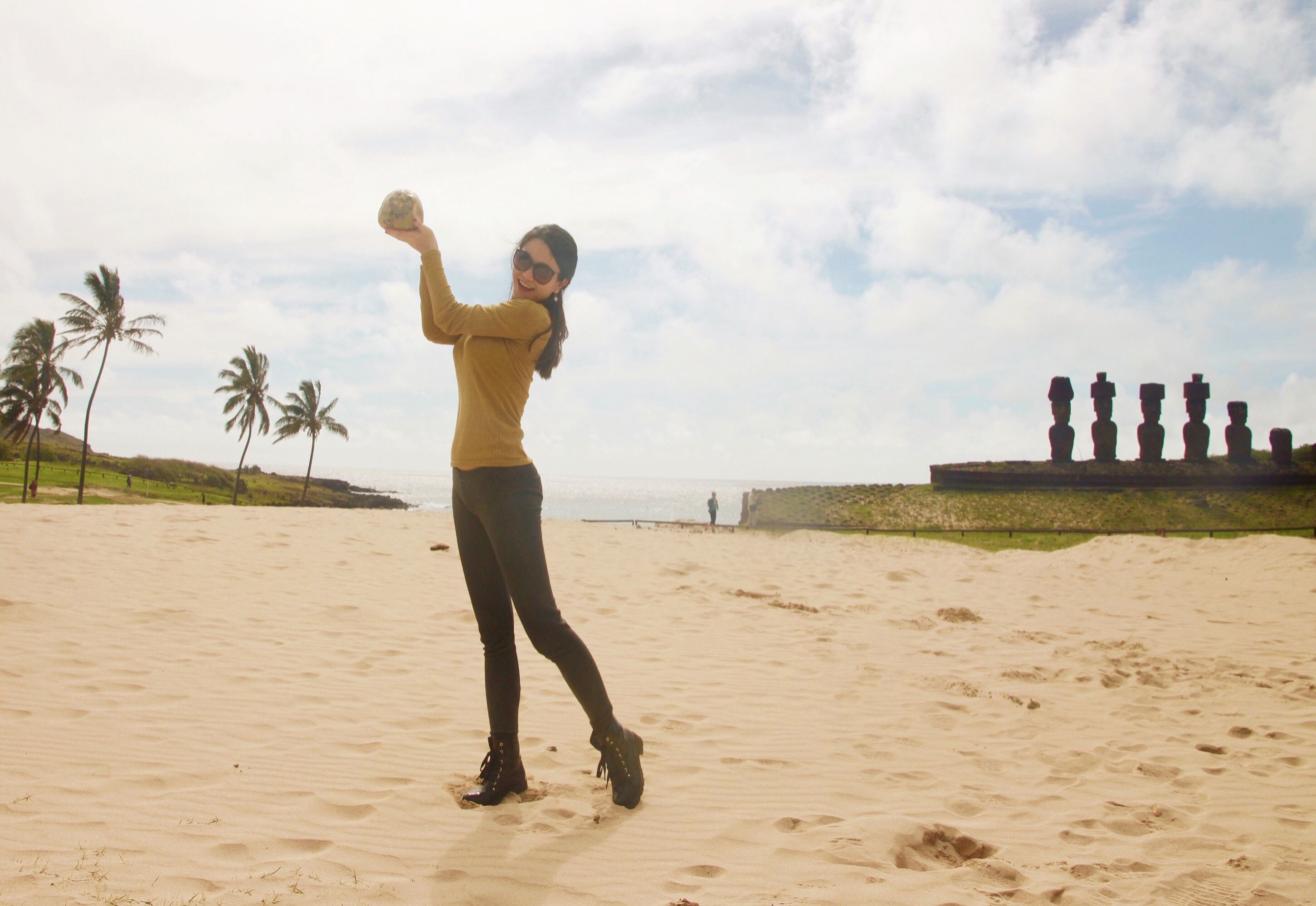
All texts and images(without me) are by @itchyfeetdonica | 图文 by Donica
When you hear “Easter Island”, what pops up in your mind? When I type this place name in my phone, this icon🗿 appears on the list. Right! It’s moai, the enigmatic giant stone figures created by the early Rapa Nui people. But of course there are much more than these monumental statues on this enchanting volcanic island. So I’m going to show you some fragments through my 9-day traveling on the island. Today let’s start from the introduction and Anakena, the cradle of Easter Island’s history and culture.
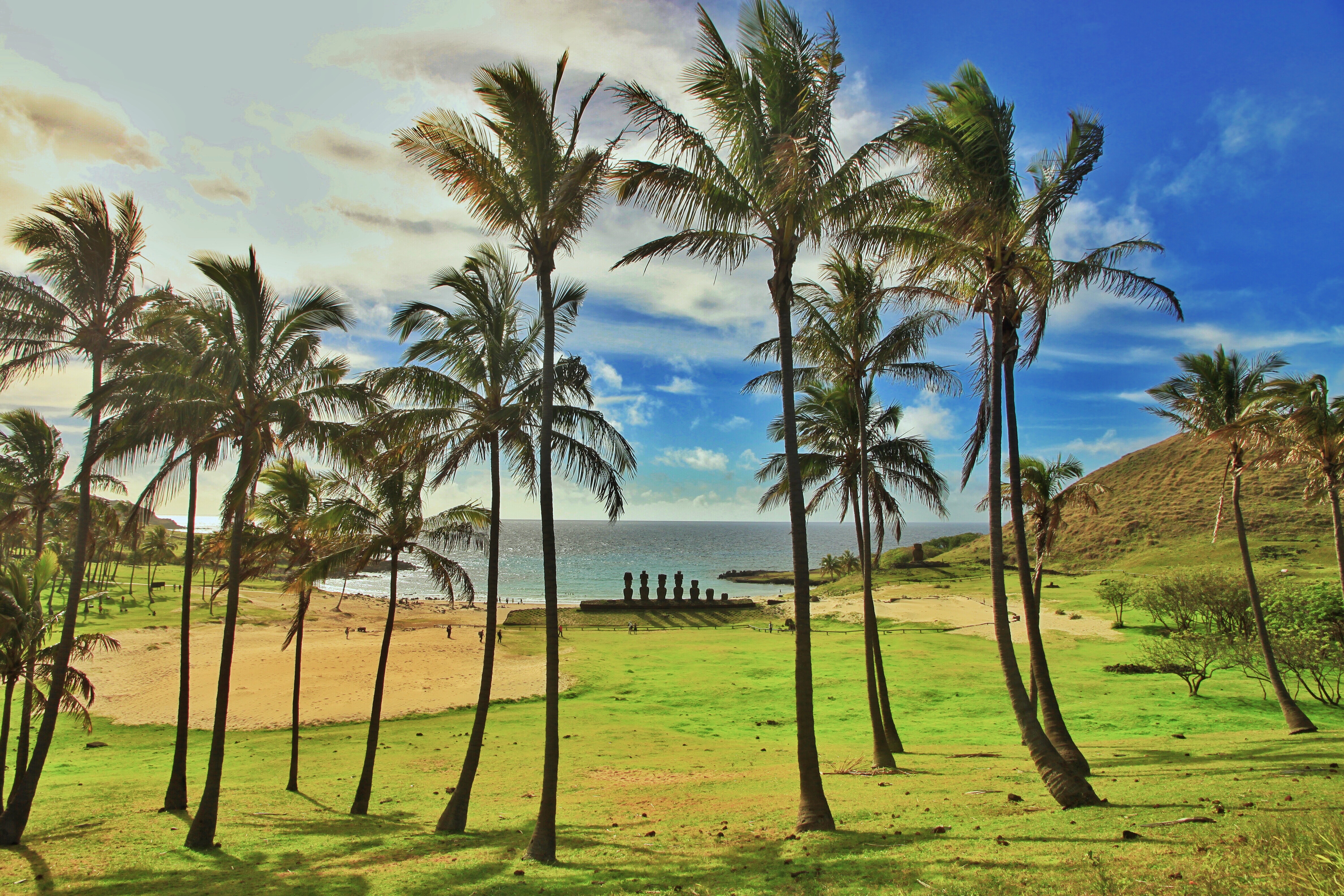
Before I start talking about my experience on the island, I’d like to make clear first some concepts that puzzled me a bit before I traveled there. Hopefully it could be helpful to you too in understanding better the Polynesian and Rapa Nui cultures.
There are three major cultural areas in the Pacific Ocean: Micronesia, Melanesia and Polynesia. As you can see from this picture I took in the Anthropology Museum on the island: Easter Island is at the southeastern vertice of the Polynesian Triangle in Oceania. 👇
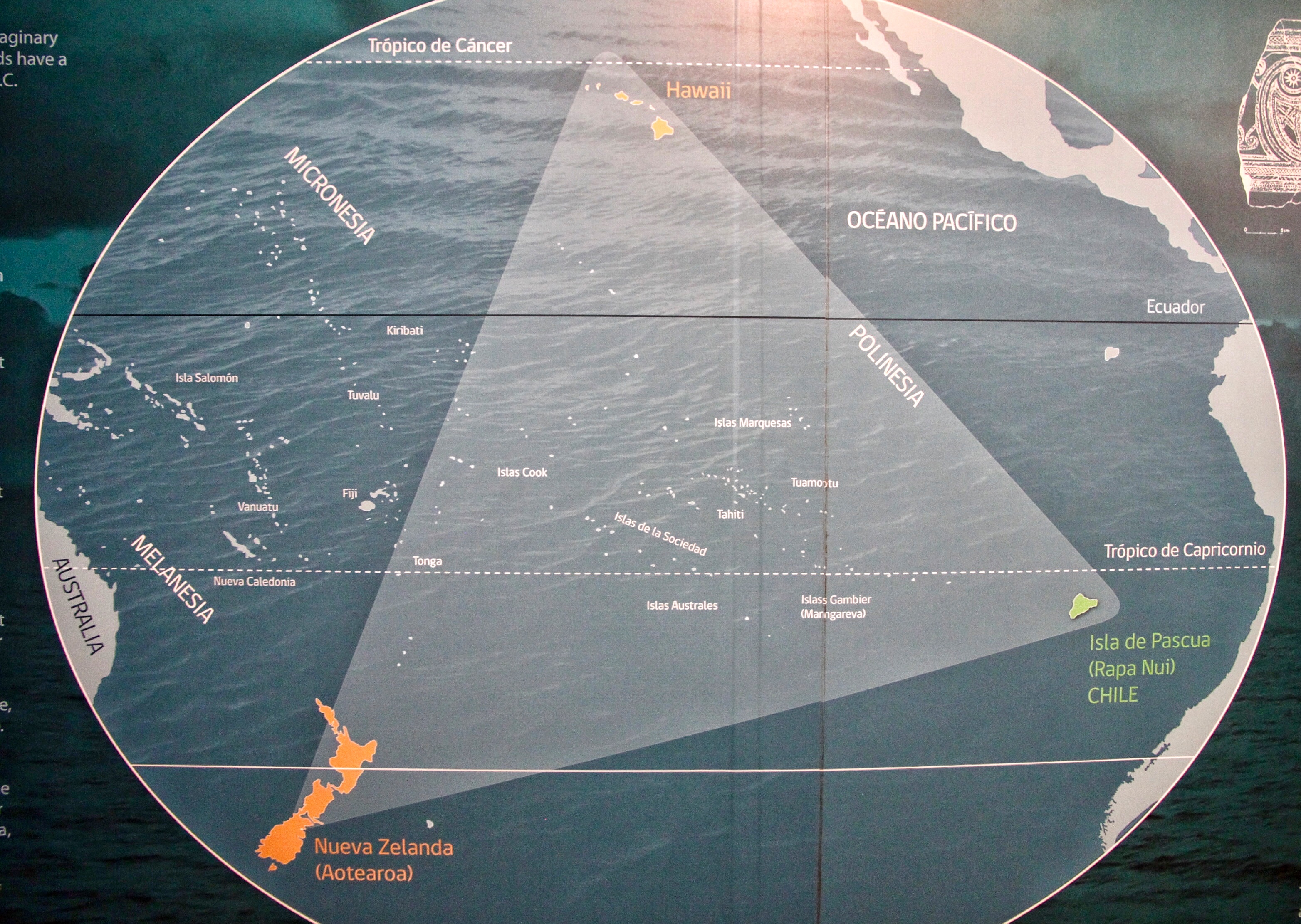
Around 500 BC, the first Polynesians set sail in their big canoes 🛶 on a colonization adventure. From Tonga, Samoa and other adjacent islands, they reached and populated the Cook Islands, Tahiti and other islands. After another 700 years, they sailed to different directions and closed the Polynesian Triangle by colonizing its three extremes: Hawai’i (Sandwich Islands) between 200 and 400 AD, Rapa Nui (Easter Island) between 800 and 1200 AD and Aotearoa (New Zealand) between 800 and 1000 AD.
After the population phase on Easter Island, it came the classic era when the Rapa Nui culture reached its peak with the construction of the huge ceremonial centers and moai statues. Then at around 17th century, conflicts started between the different lineages. Moai were toppled and the Tangata Manu (birdman) ritual sprang up, until the arrival of Catholic missionaries in 1864.
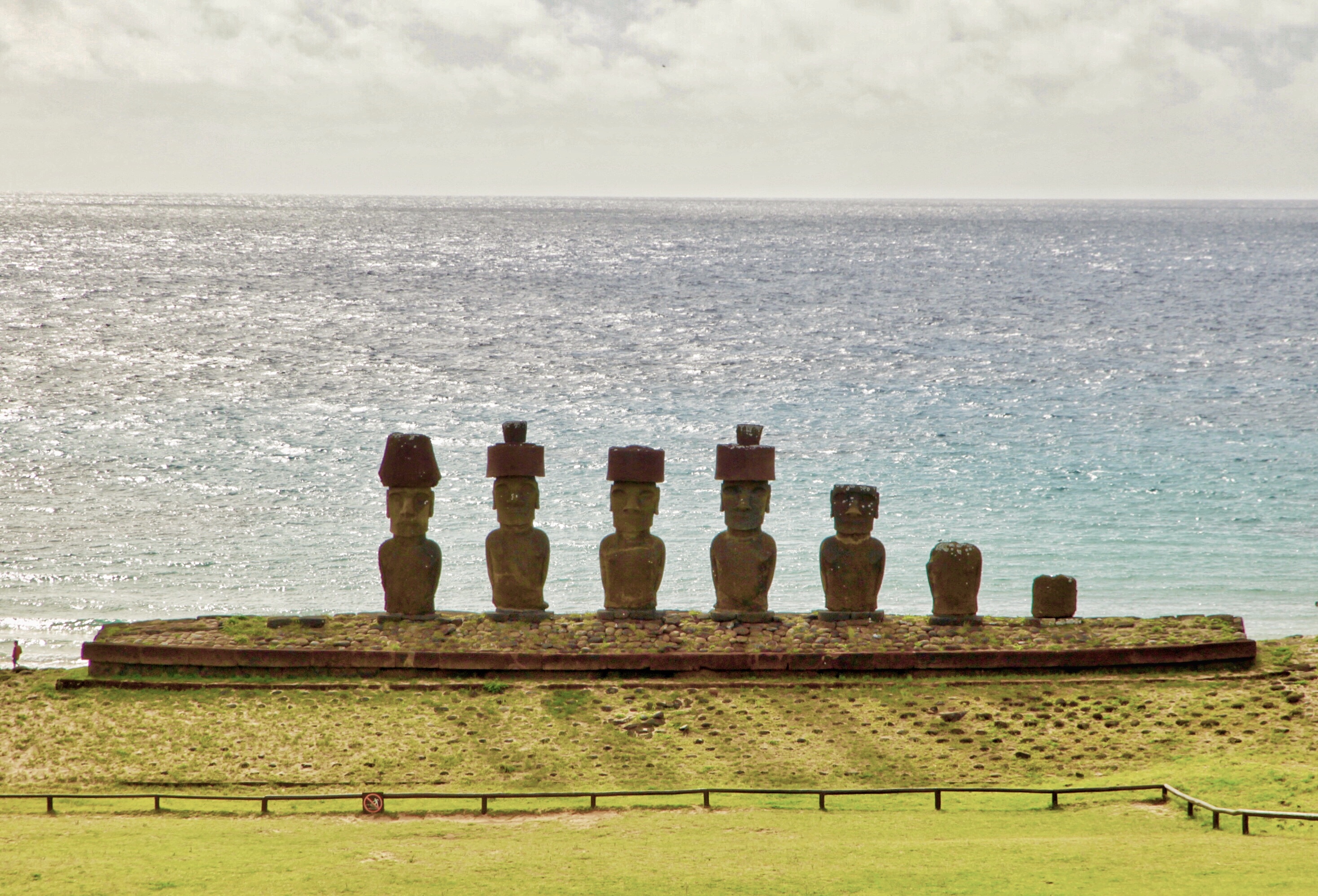
I’m lucky to have worked in Chile and traveled to Easter Island which was annexed by Chile in 1888. It’s a flight around 5 hours by LAN Airlines (now LATAM Airlines, the only operator flying from the South America continent) from Santiago to Hanga Roa, kind of the capital town, the settlement with most residents.
You can also fly from Tahiti(less frequent flights), or take a more intrepid route - once a year, you’ve got the chance to sail the “tall ship” Soren Larsen to Easter Island from New Zealand. This great voyage takes 35 days, crossing the point on earth furthest from land. Sounds epic right? Just takes some time, courage and patience ;)
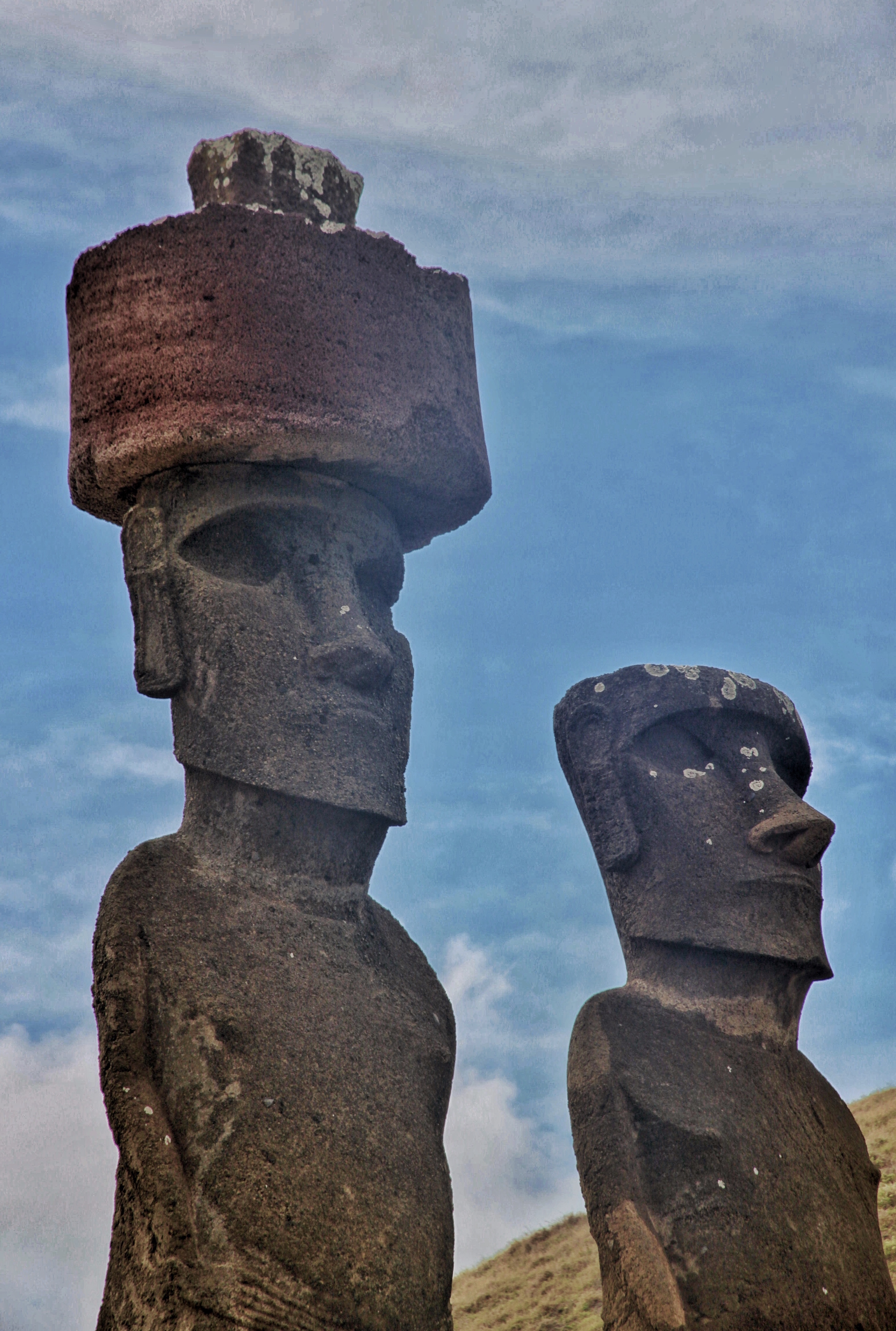
The high season of tourism on Easter Island is normally from December to March, the warmest time on the island, and the coldest time in the Northern Hemisphere. In late January or early February, there’s the two-week long traditional festival Tapati Rapa Nui drawing crowds of tourists. On this annual event, the islanders showcase their skills and crafts in stone and woodcarvings, body-painting and cooking in the Polynesian style.
We rent a motor scooter and roamed around the whole island for 9 days in August. You might think it’s too long to stay on a small island like this. But we explored almost all corners of it, and enjoyed it a lot during the off season when there were not many tourists. We even got upgraded to first class in the flight back to Santiago de Chile, because the airplane was almost empty. What a pleasant surprise to be served a little piece of succulent steak, paired with the fantastic Chilean wine! ; )

From the picture below(shot from my DK travel book of Chile), you can see that the overall shape of Easter Island is triangular. The main and only village Hanga Roa is located at the southwest. The photos in this post were all taken at the site number 5 - Playa(beach) Anakena. 👇
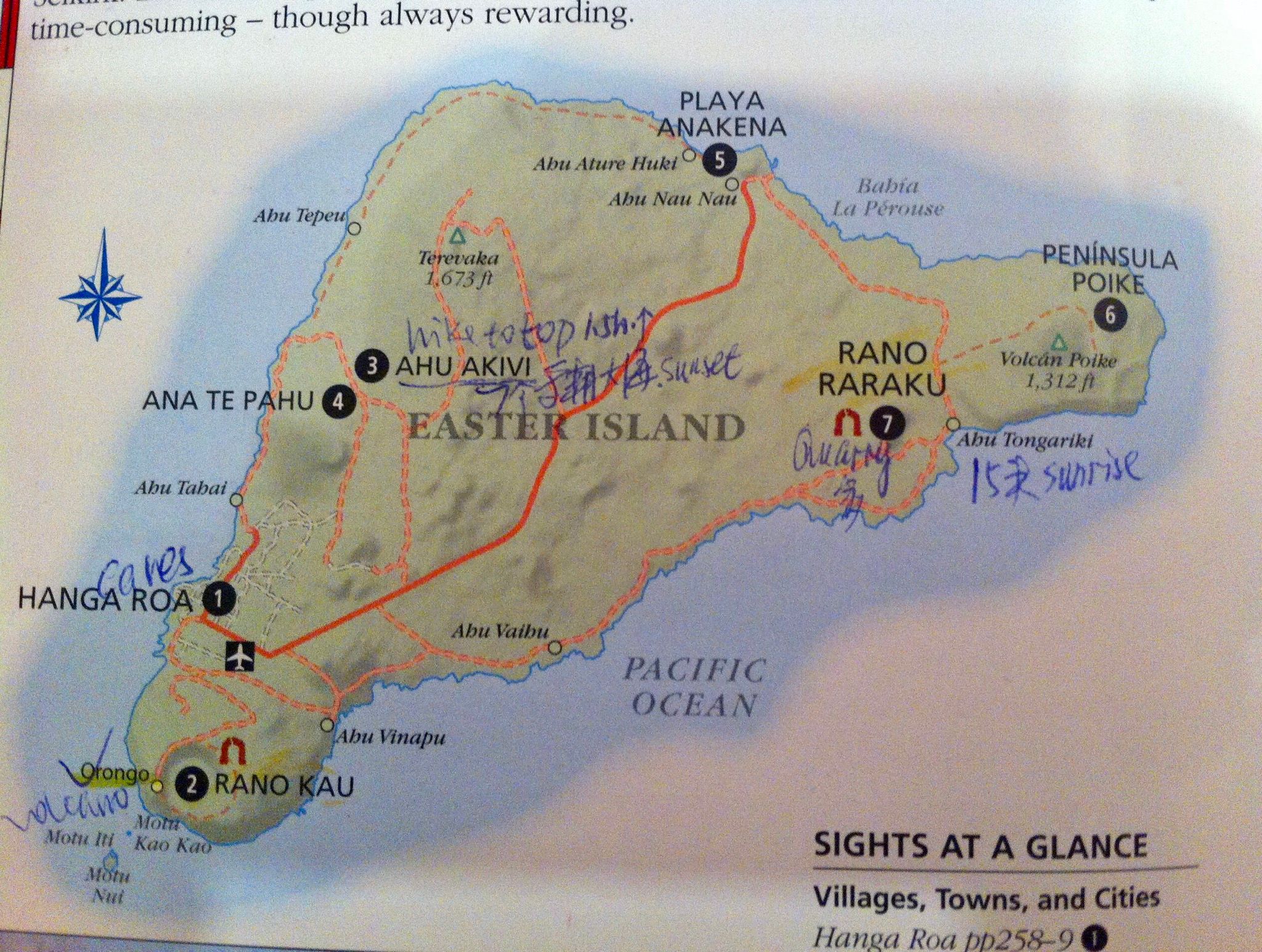
Anakena has two ahus(ceremonial platforms); Ahu Ature Huki has a single moai(the giant monolithic stone statue), and Ahu Nau Nau has seven moai statues, two of which have deteriorated. 👇
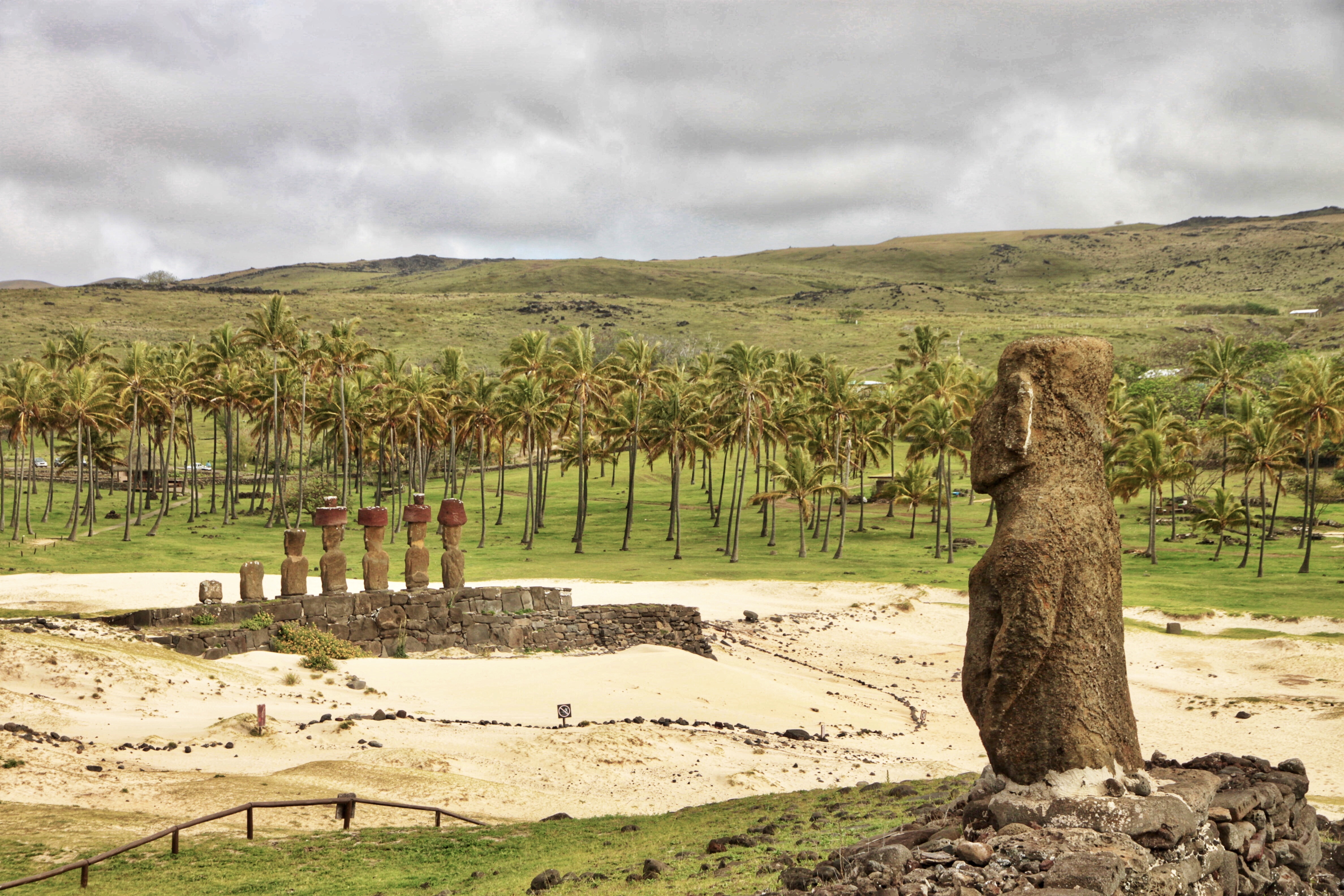
Anakena is the only tropical coral sand beach on the island that is good for swimming and sunbathing. The other beaches here are actually pretty rough, mostly with rocks, cliffs and strong waves. Surrounded by palm trees, it’s a great place to relax and to click some pretty shots.
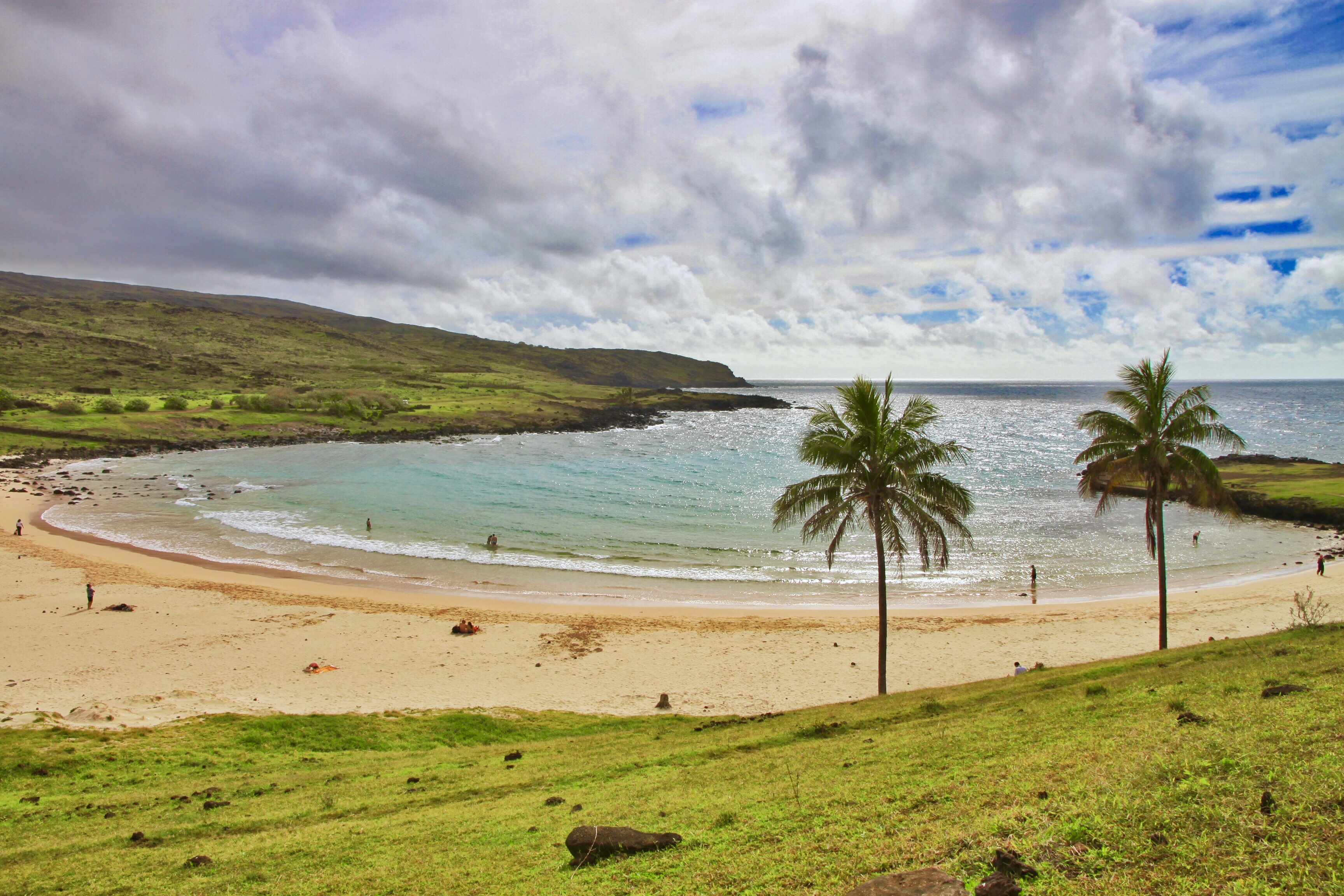
Anakena is known as “The Bay of The King”, named after the founding Rapa Nui king Hotu Matu’a who set foot on the island when it was first populated. This was where king Hotu Matu’a built his first house, and it remained the sacred land of the royal family.
The single moai of Ahu Ature Huki is the first moai statue ever to be restored by Norwegian explorer Thor Heyerdahl in 1956. The moai was raised by using only rocks, logs and rope. The logs were used as levers to lift the statue and rocks were put underneath, raising the statue little by little. 👇
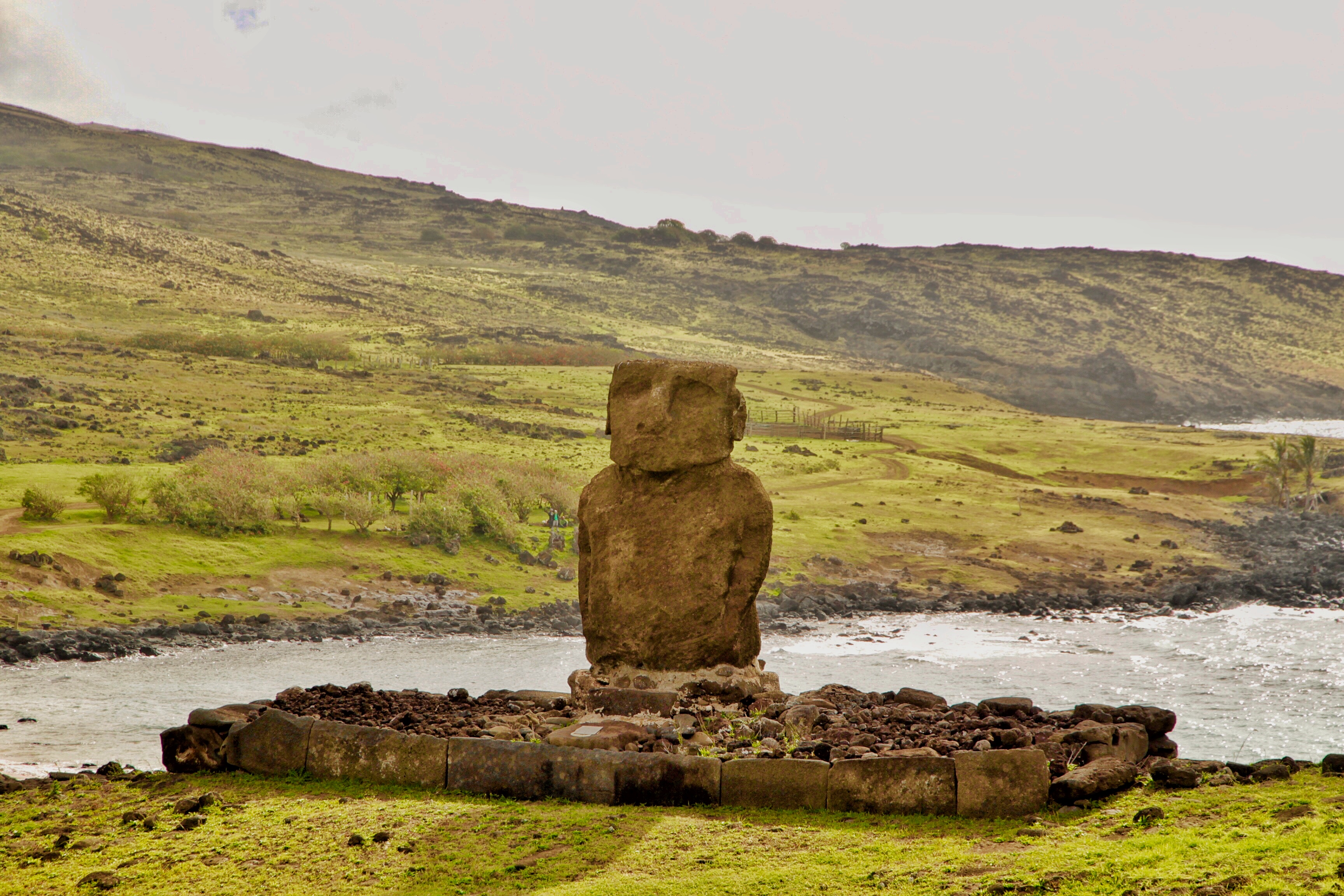
This whole vicinity in Anakena is a dense archeological site. It contains ceremonial centers both above and under the ground. So it’s of vital importance for understanding this mysterious island’s past.
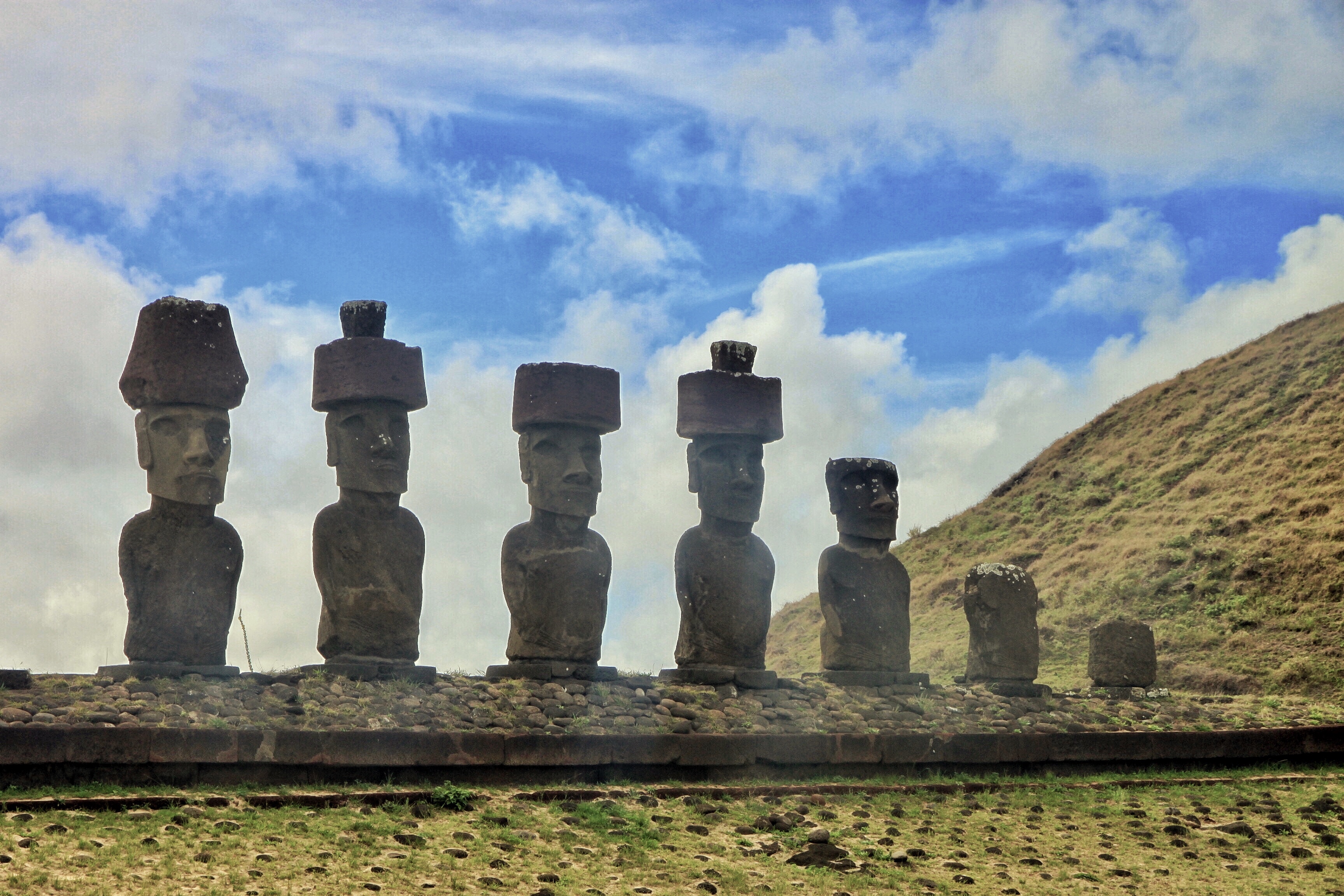
That’s it for my first post about Easter Island. Hope you enjoyed it. Have you ever visited this remote island? What did you do there? Tell me what you think in the comments below! 😃 See you next time!
Thank you for reading. Check out my recent posts below, and follow me for more! =)
##
Hong Kong Star Ferry Crossing at Sunset 暮色中的维多利亚港和天星小轮
Traditional Clothing in Peru’s Colca Canyon 秘鲁大峡谷山民的传统服装长什么样?
The Exciting Drive at Gotthard Pass in Swiss Alps 行驶在全球最长的隧道山口
@ItchyfeetDonica is my only account here and I’m 200% real ;) → Introduce Cross-culture Me on This Cross-over Platform 处女贴-自我介绍

Here are some screenshots from my Instagram. Follow @ItchyfeetDonica for more shots around the globe!
!steemitworldmap -27.074393 lat -109.322484 long Anakena Easter Island d3scr
This page is synchronized from the post: ‘#32 Explore Easter Island with Me (1) - Introduction and Anakena 🗿🇨🇱 复活节岛摩托之旅(一)’